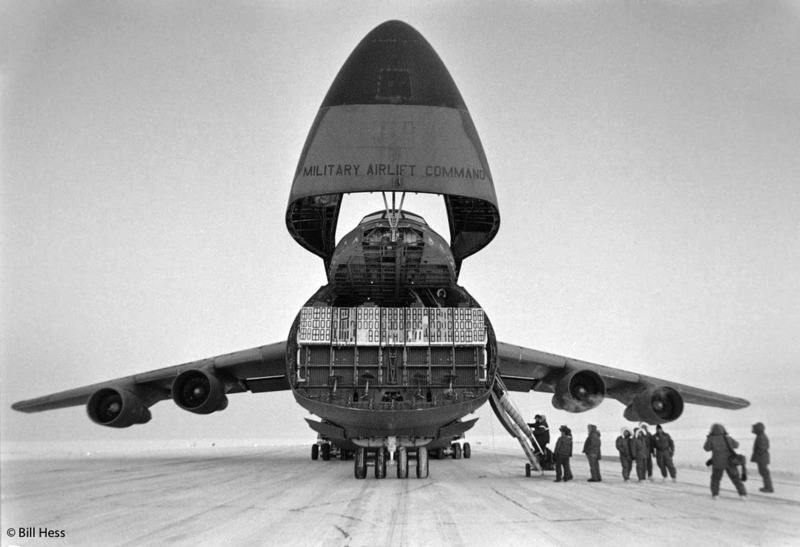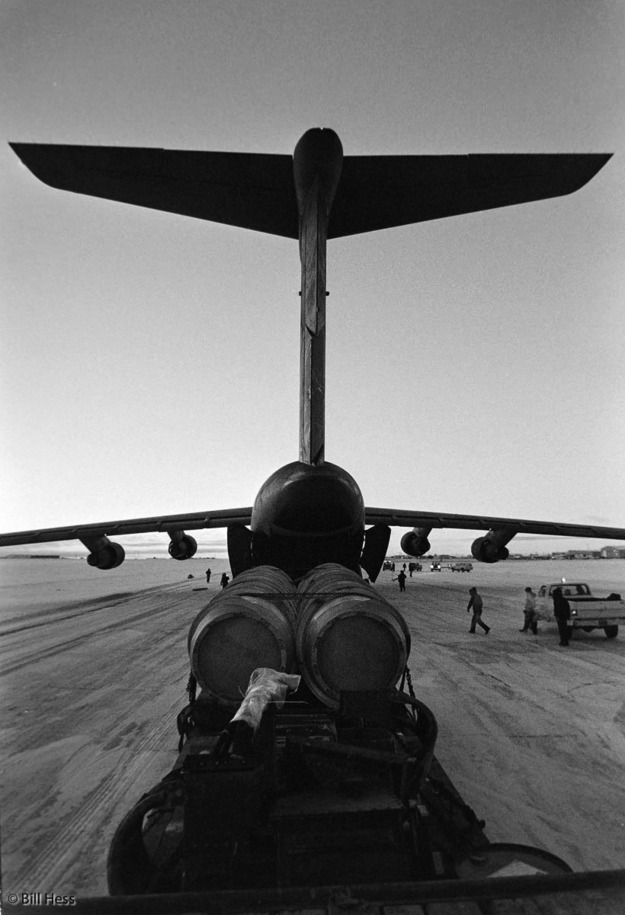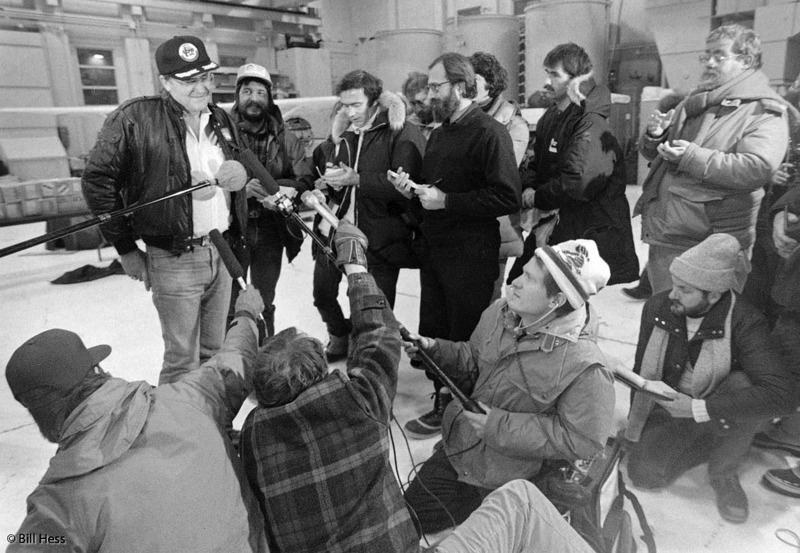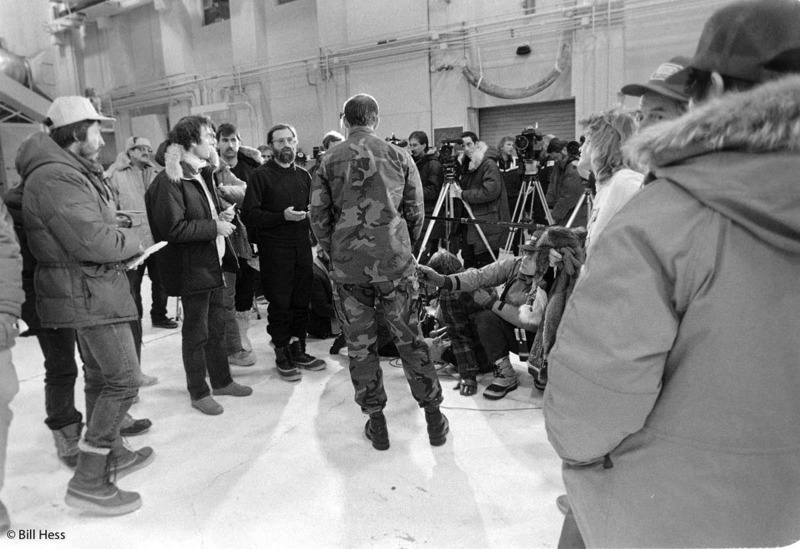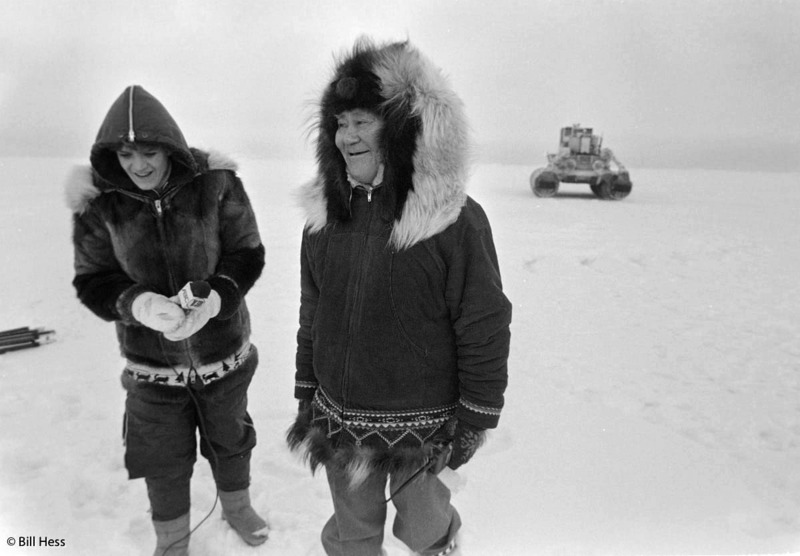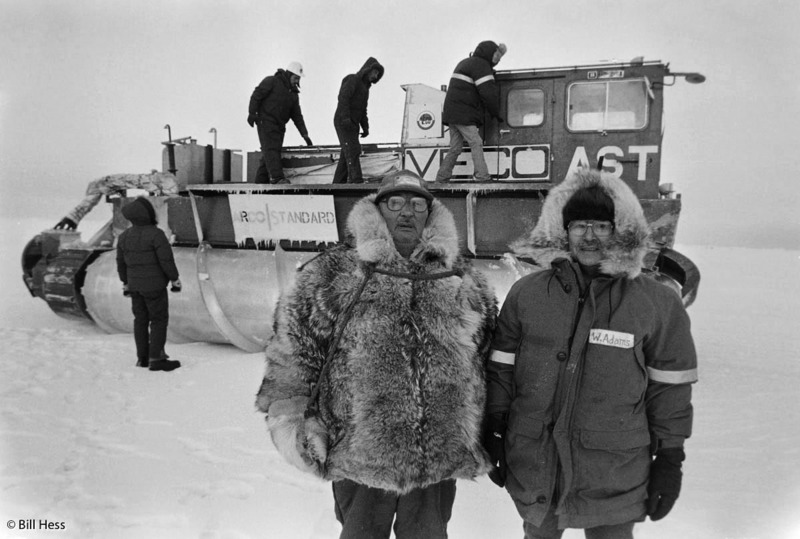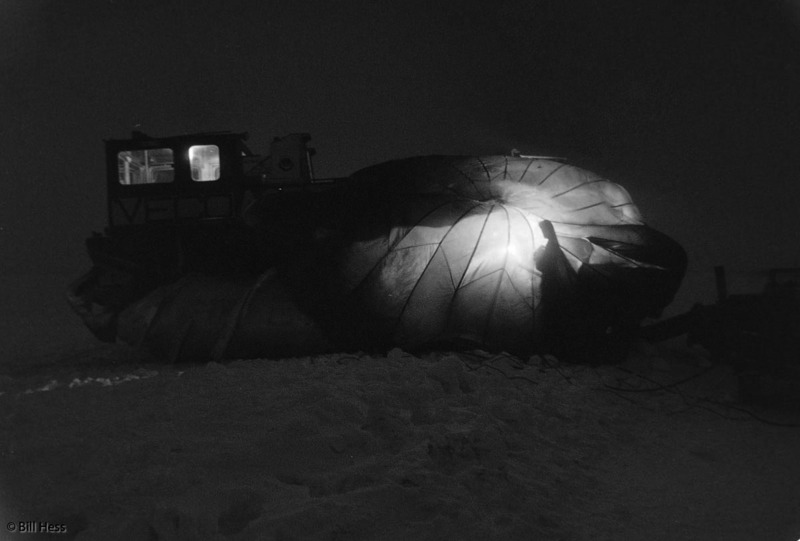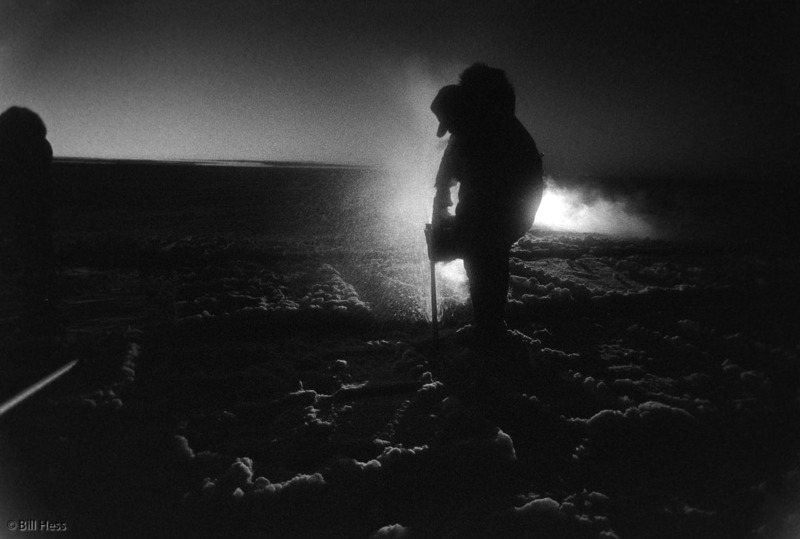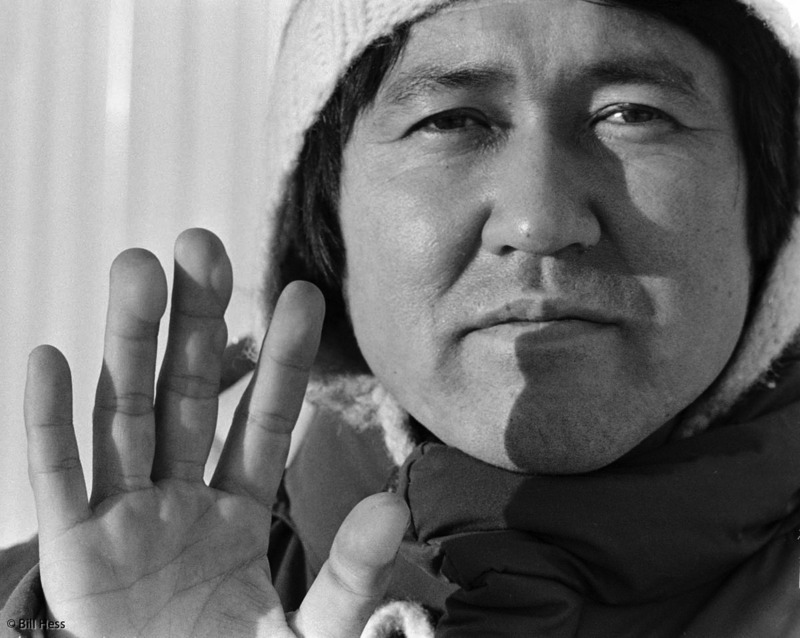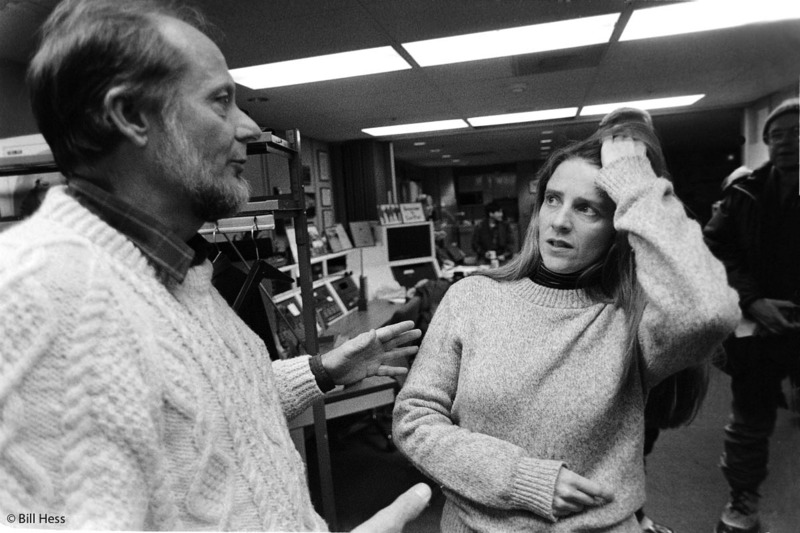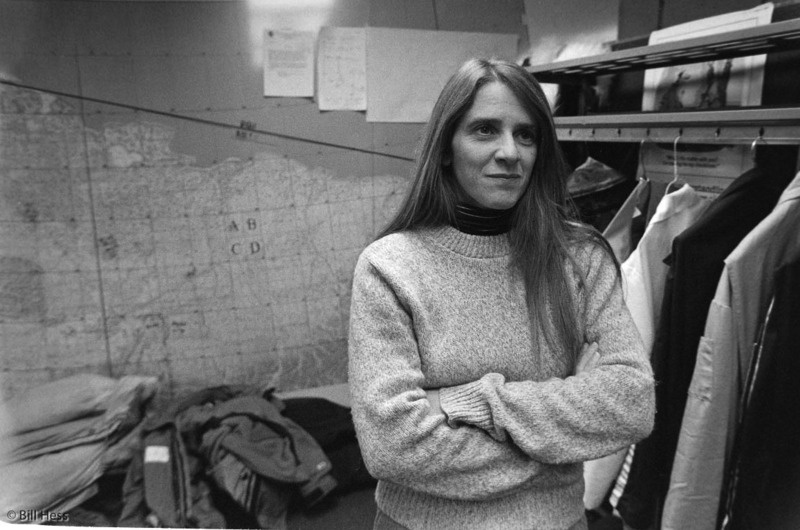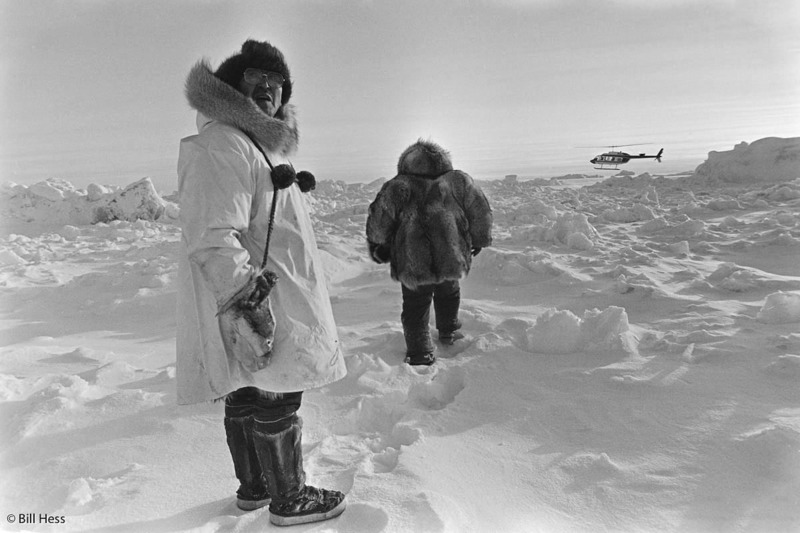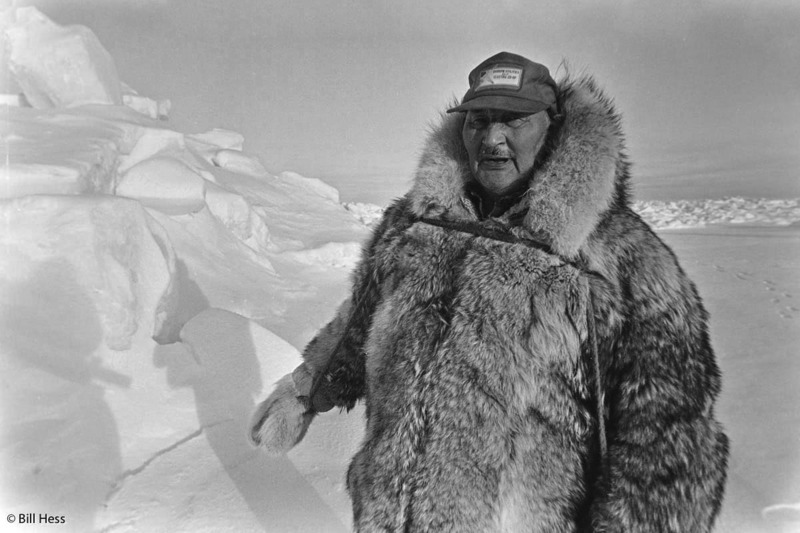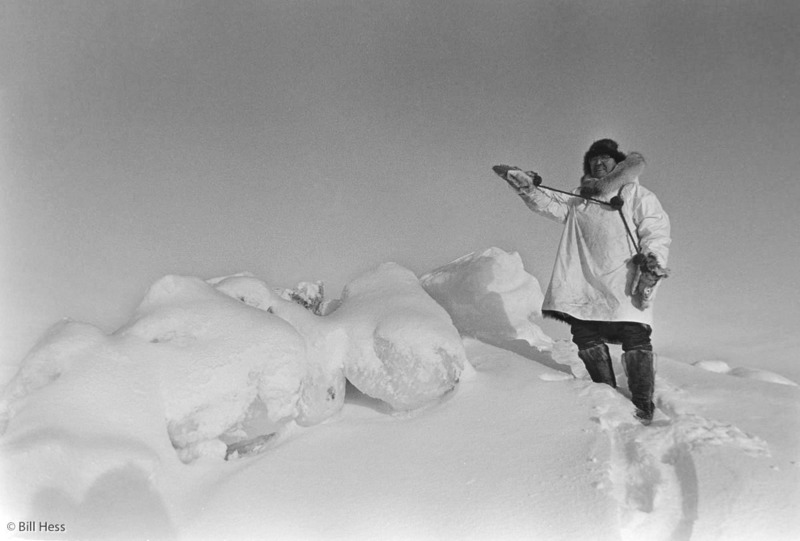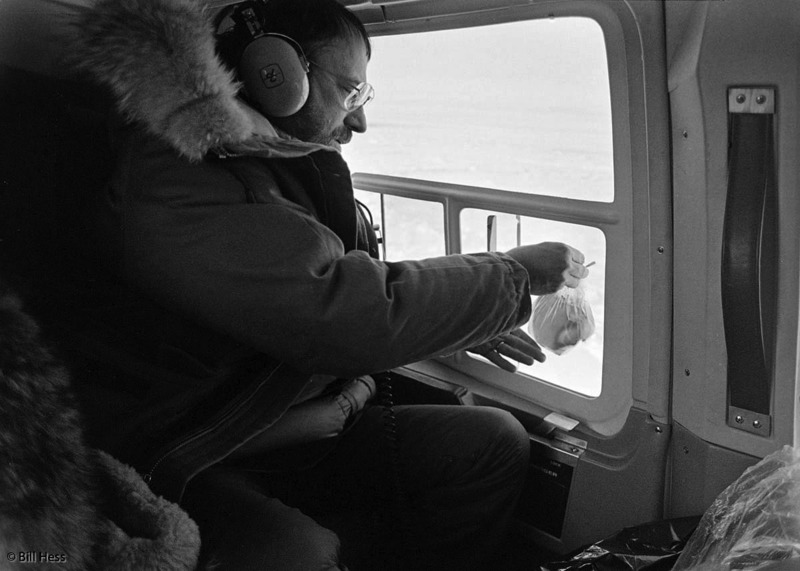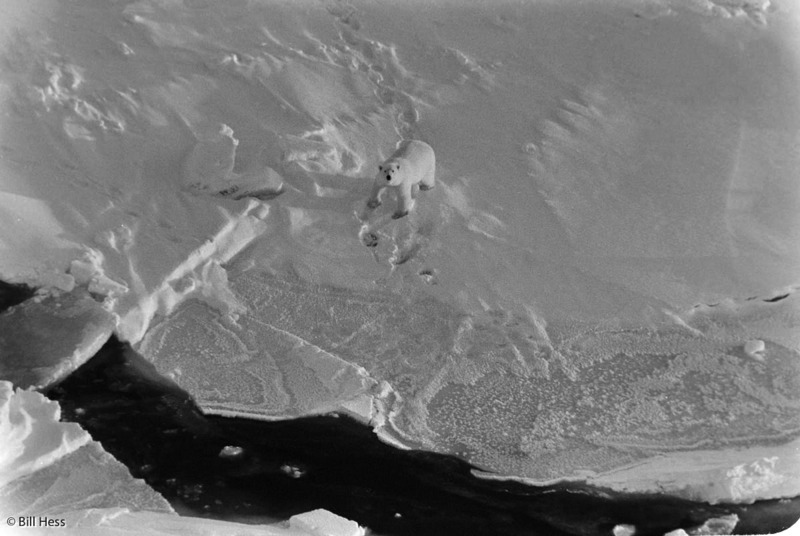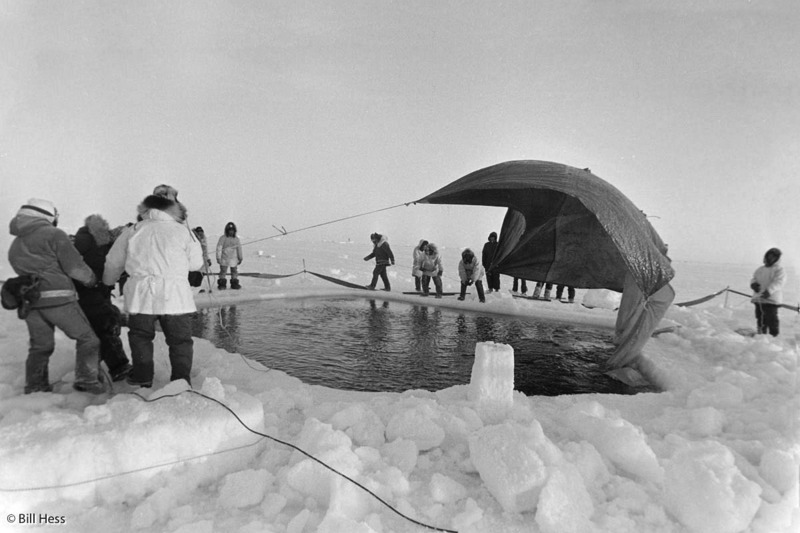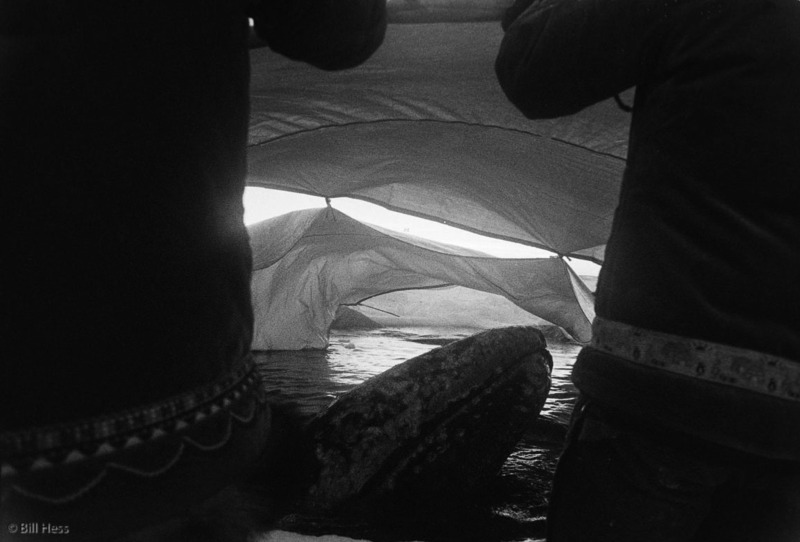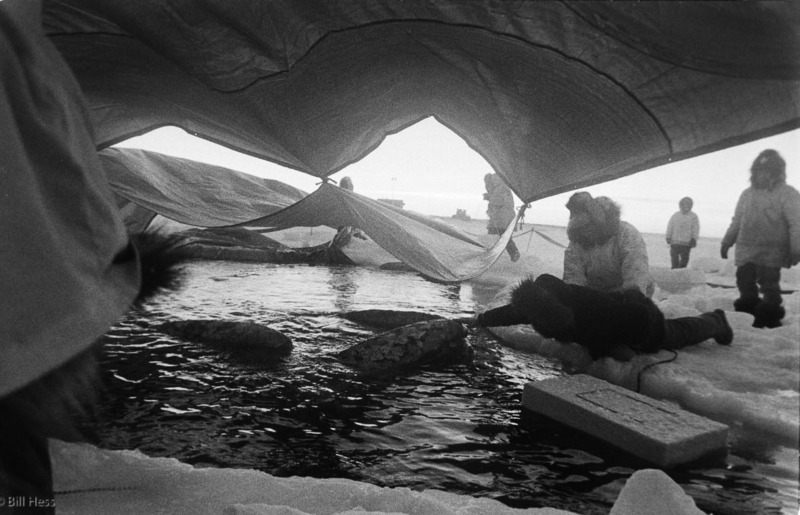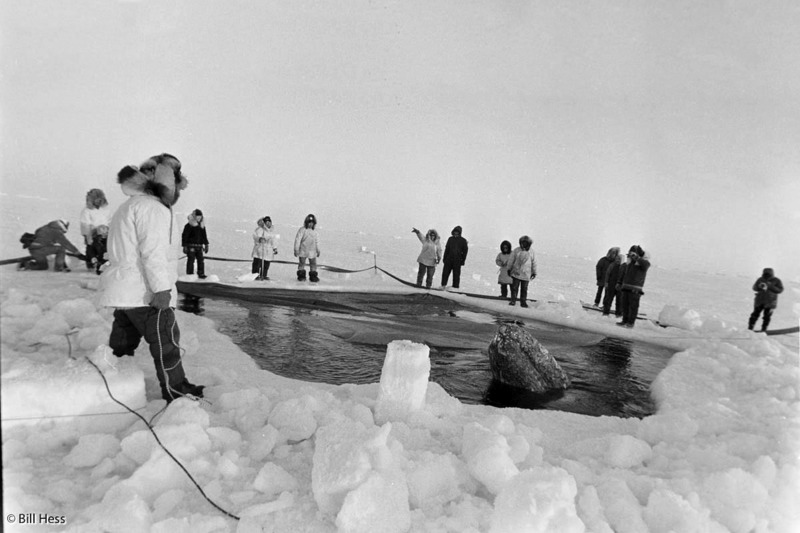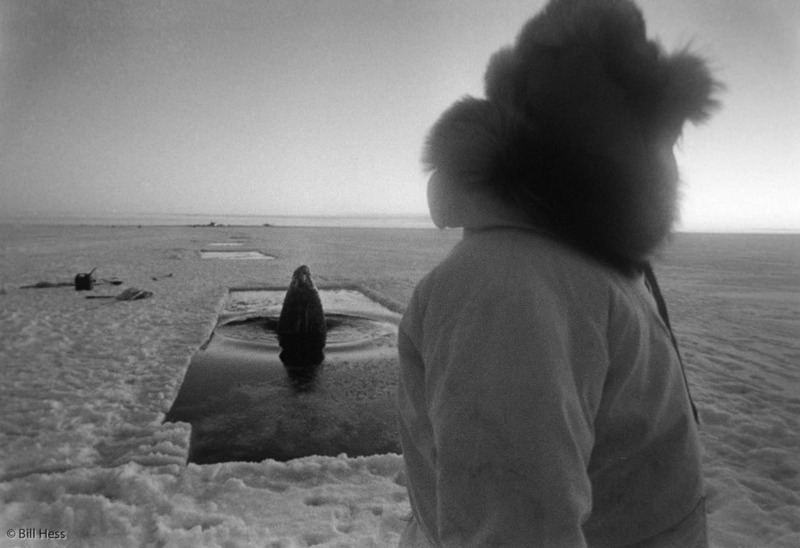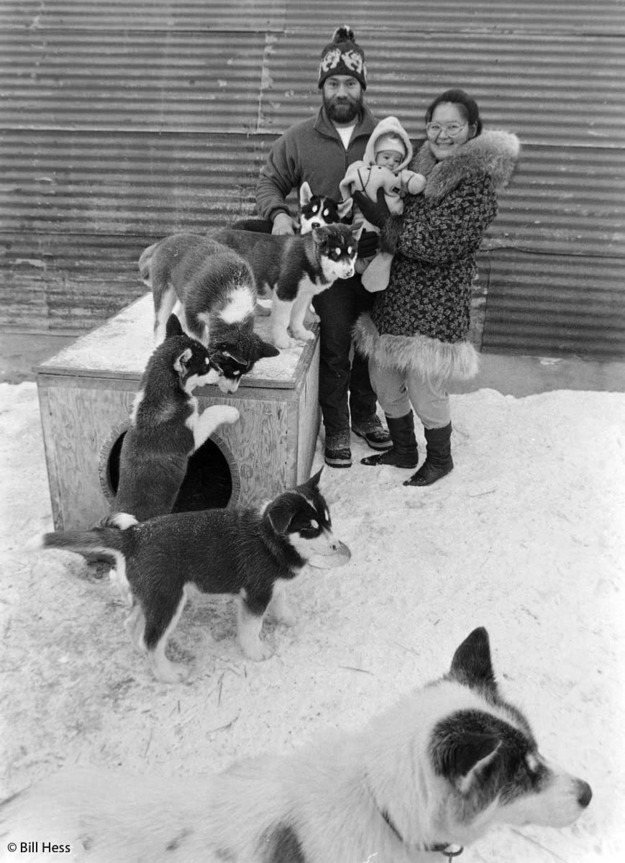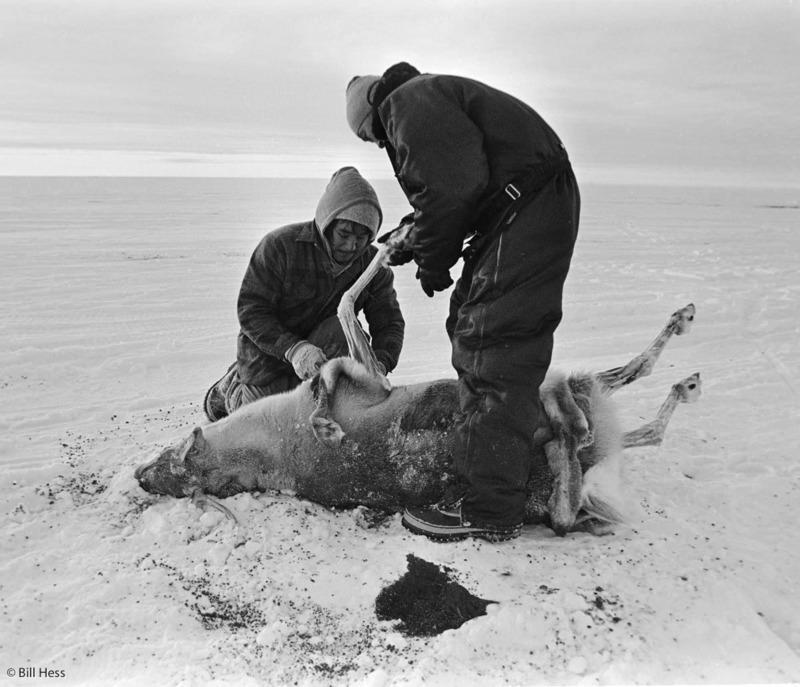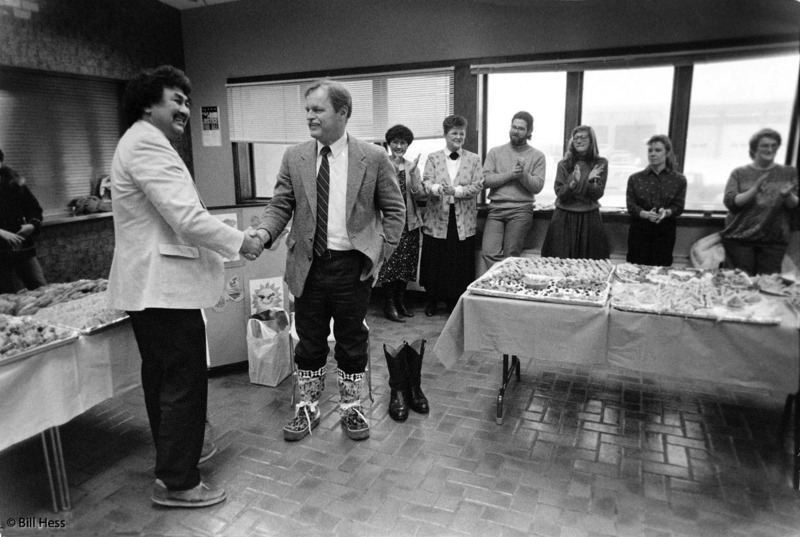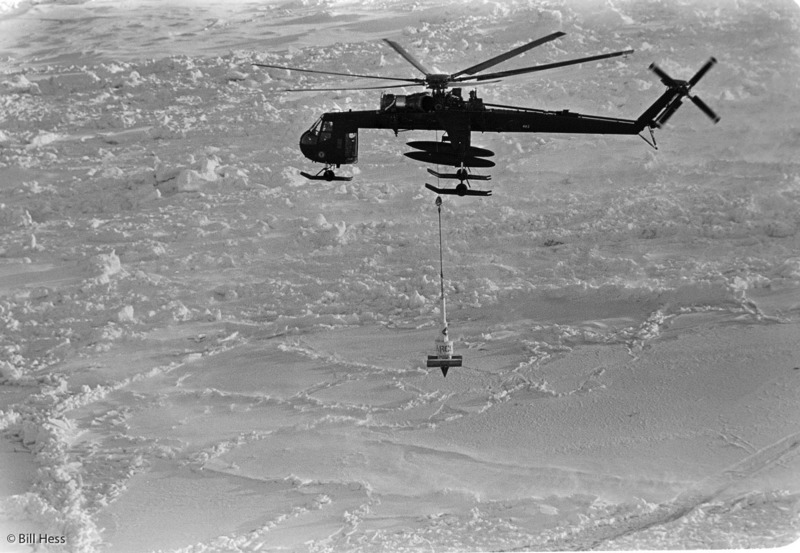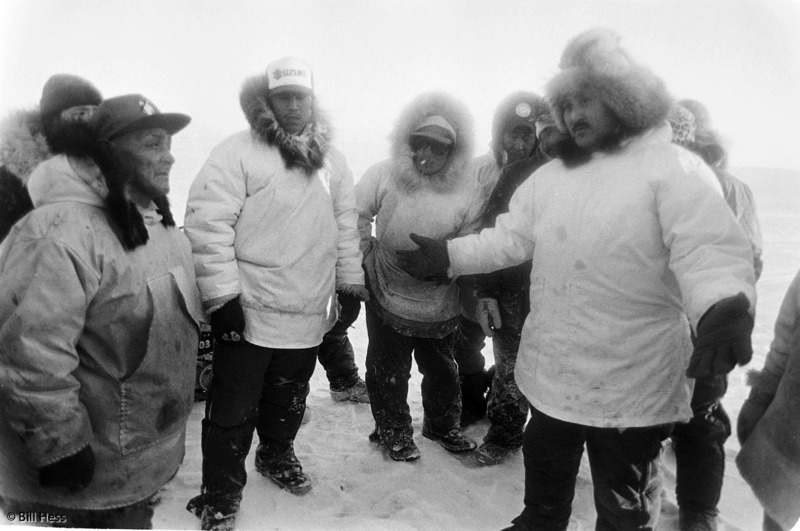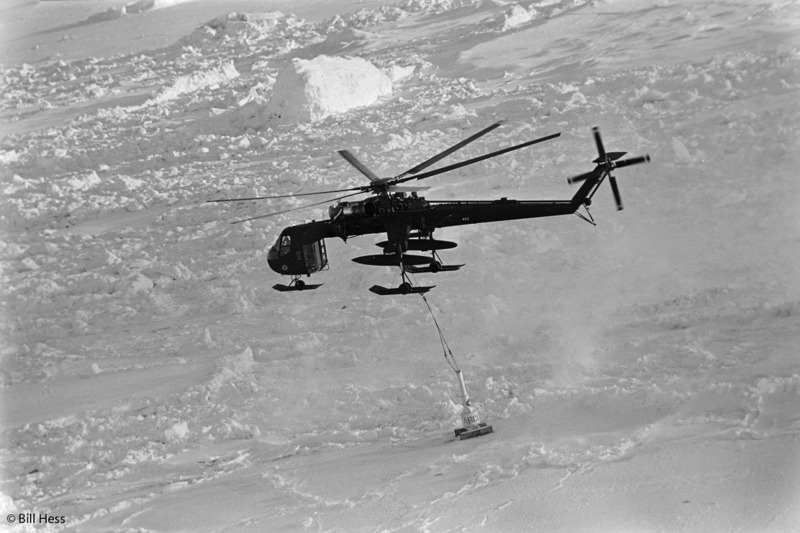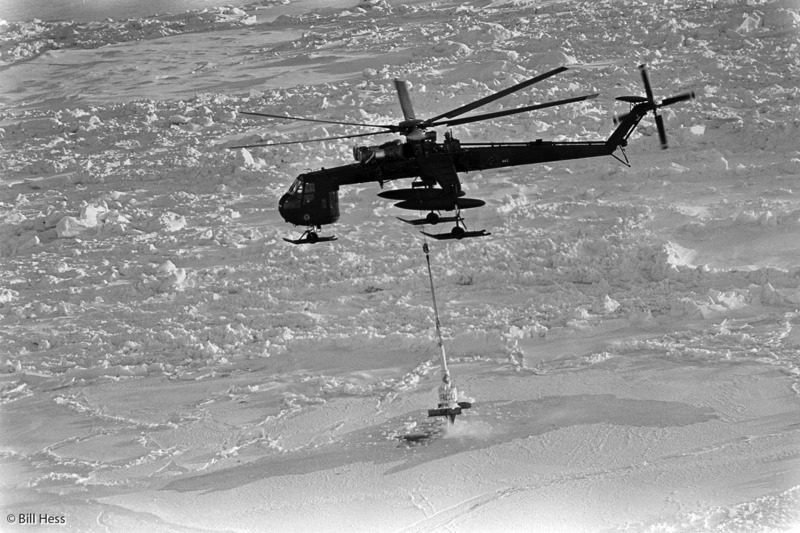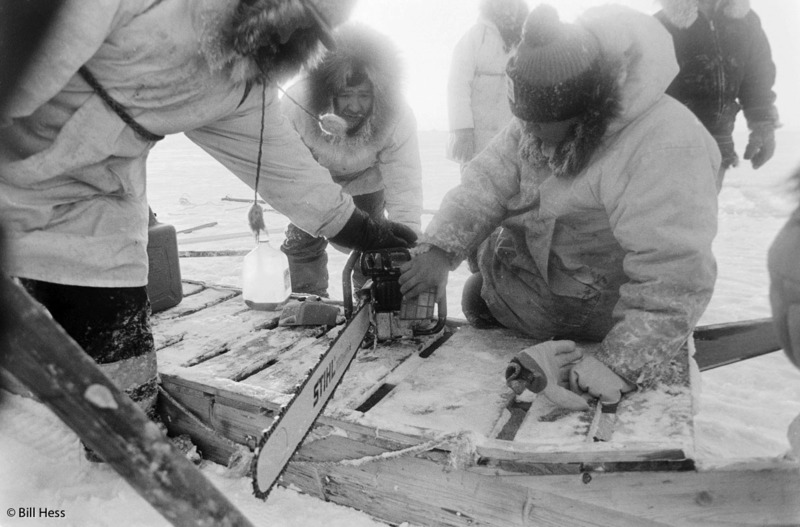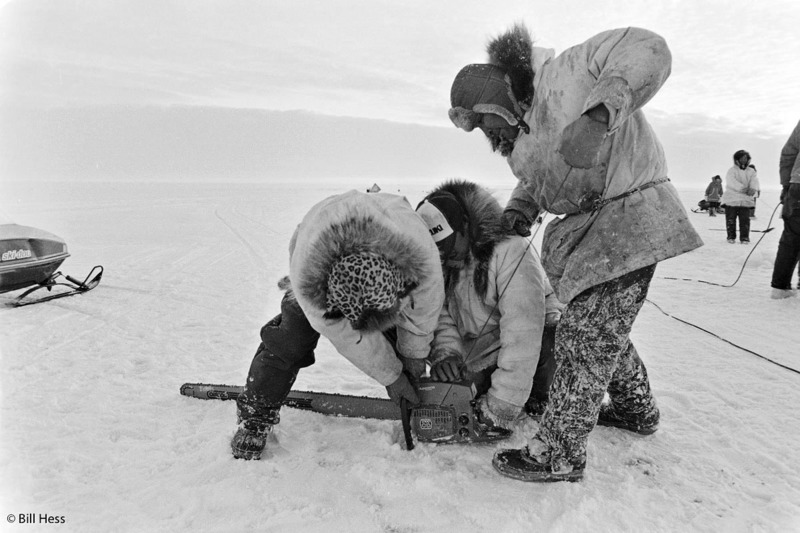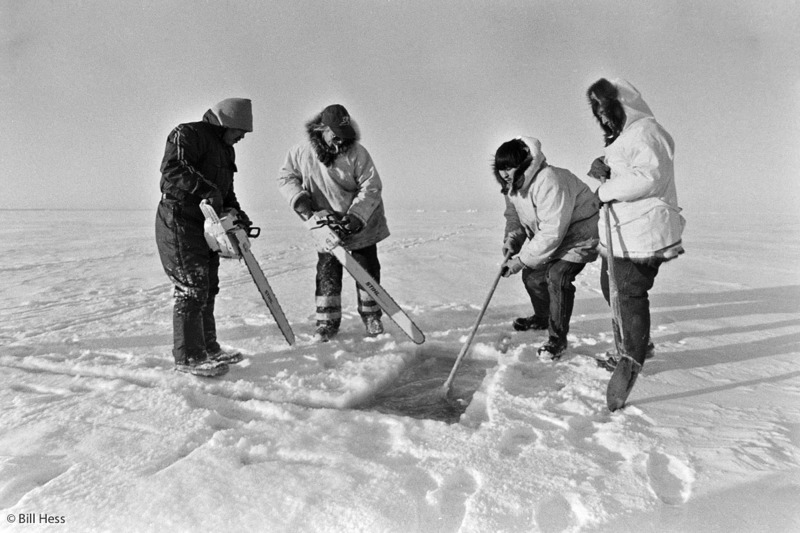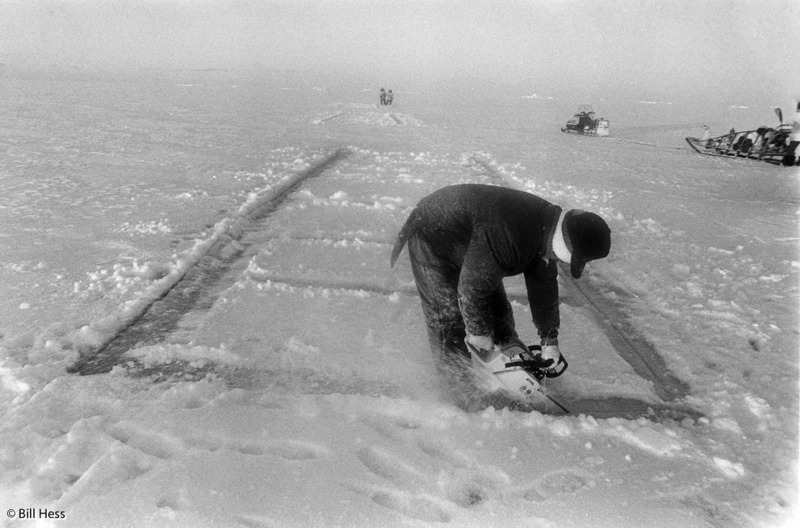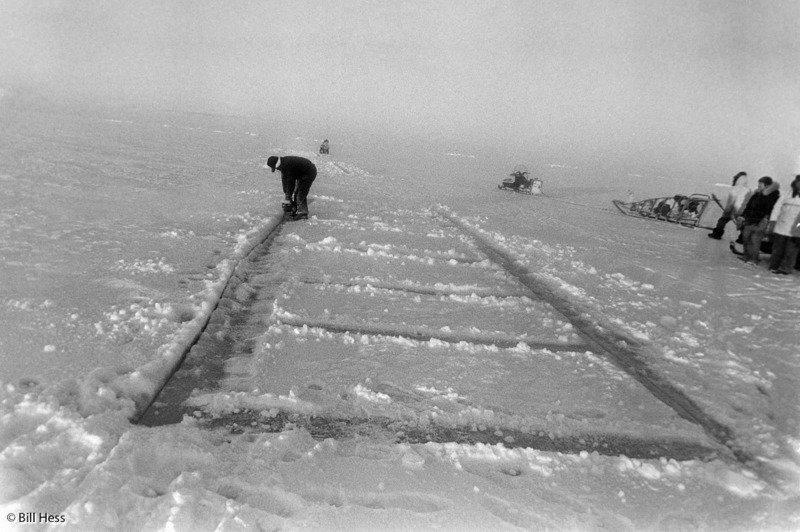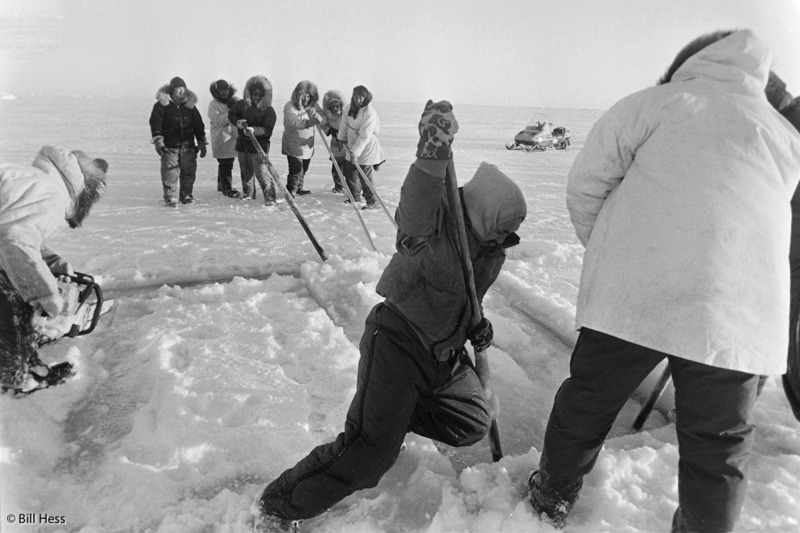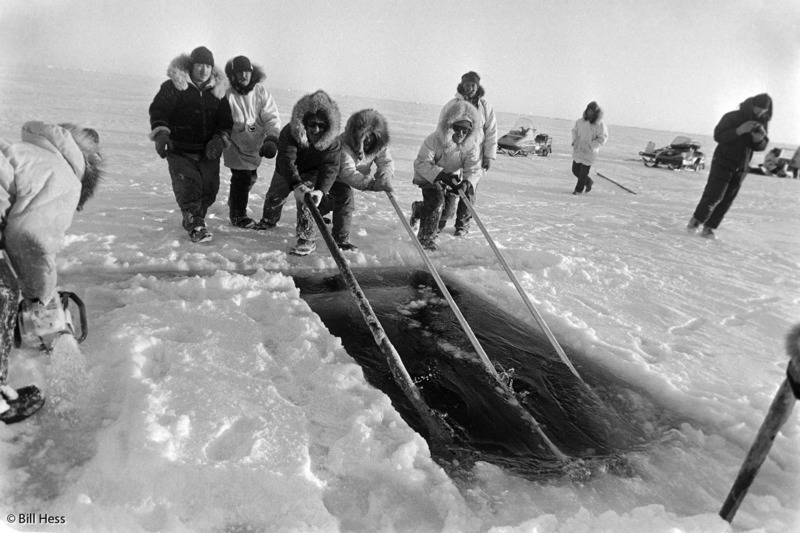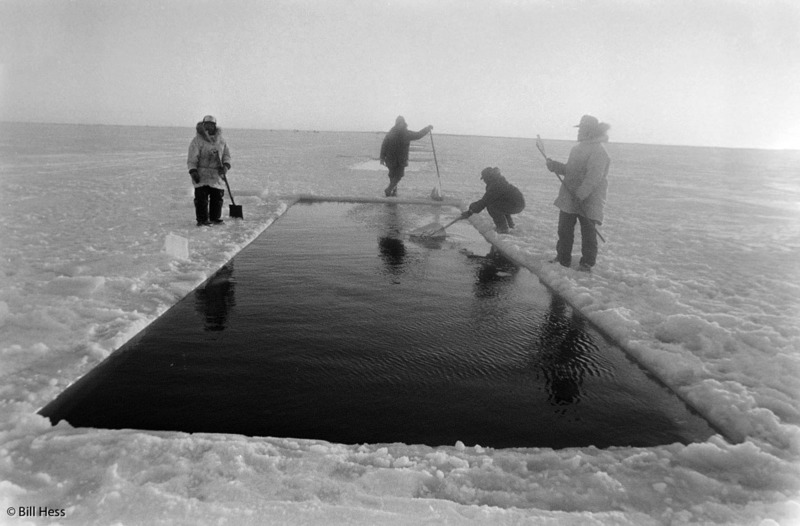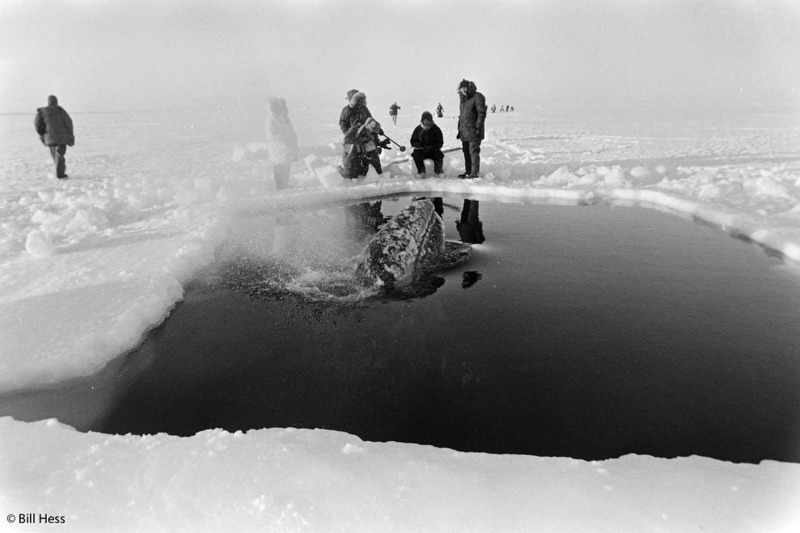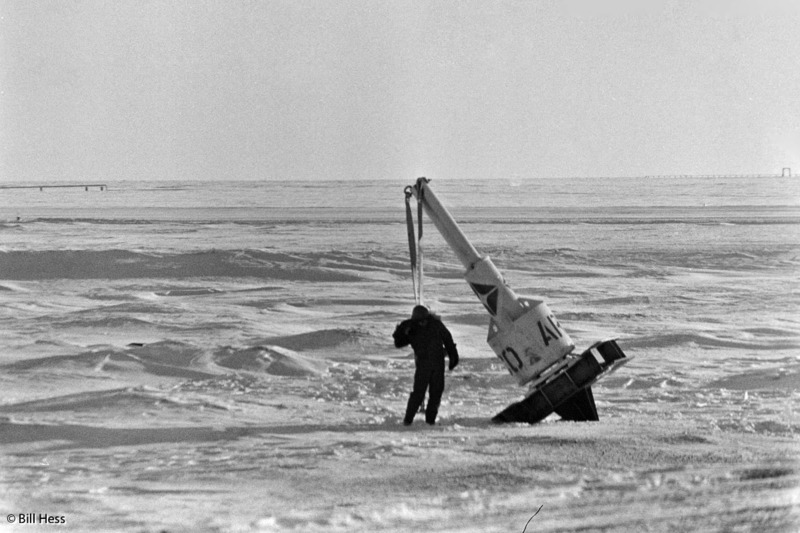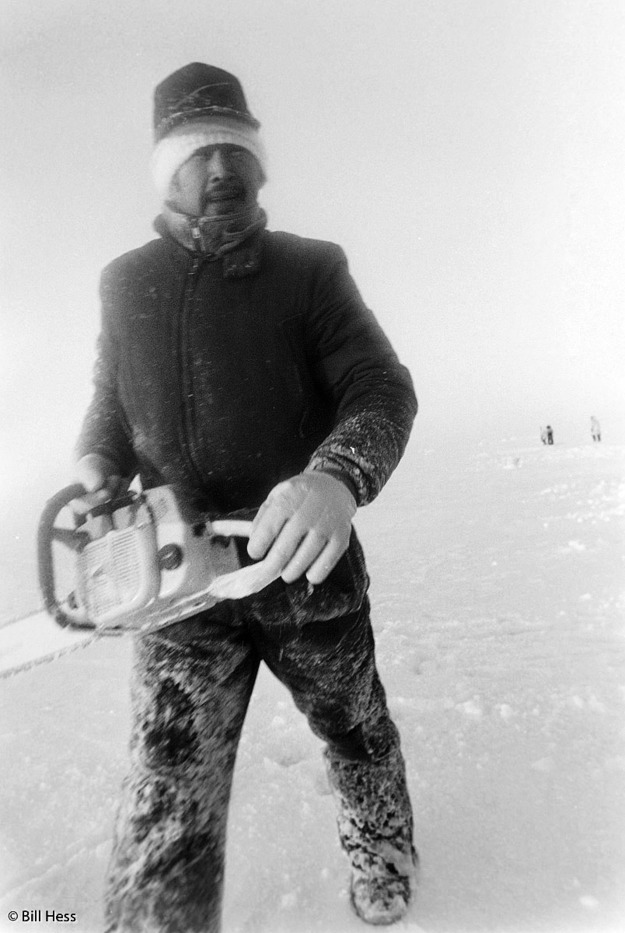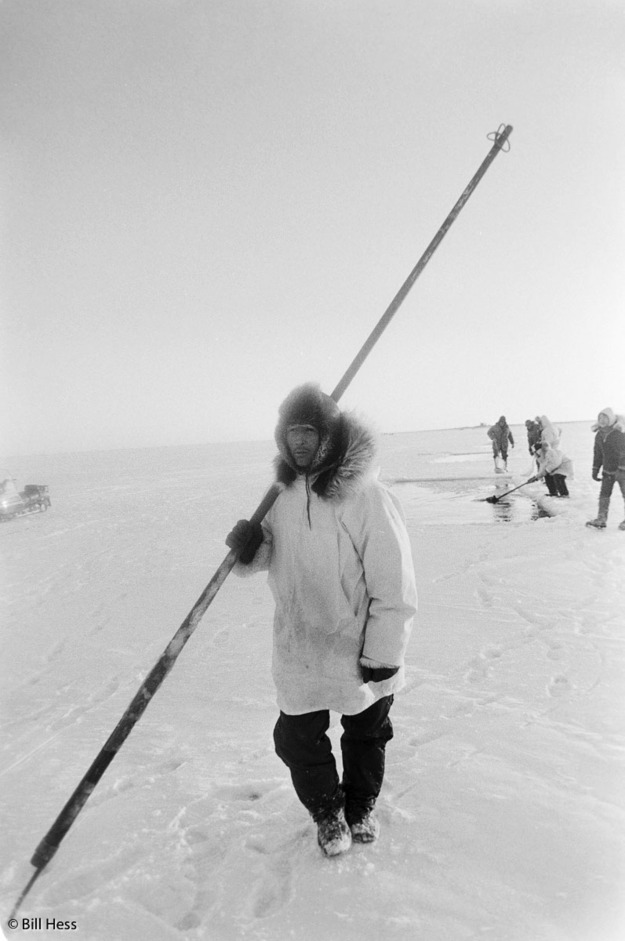The movie, Big Miracle, and what I witnessed in real life, part 9: the Archimedean Screw Tractor flies to Barrow inside the belly of one whale of a jet
 Friday, February 17, 2012 at 10:44PM
Friday, February 17, 2012 at 10:44PM By now it was official - the two Soviet Ice Breakers were busting their way toward Barrow, so that they could tear the pressure ridges apart and clear out a gap for the whales to pass through into open water. Even so, the whales still had a ways to go even to draw near to the pressure ridges. The water closer to shore was believed to be too shallow for the icebreakers. This meant the Iñupiat whalers and a few others who had joined them in the chainsaw crews had to keep coming, to keep cutting and lengthening their trail to the ridges.
Yet, if there was a way to cut that trail faster and more efficiently, people still wanted to do it. The faster the whales got to open water, the faster they would be out of danger and the sooner everybody who was not from Barrow could pack up and go home. And so it happened that the largest airplane in the world brought the Archimedean Screw Tractor to Barrow.
The airplane was the National Guard's Lockheed C-5A Galaxy, designed to carry "oversized and outsized" military hardware and weaponry, plus combat troops, anywhere in the world. The Japanese-built Archimedean Screw Tractor was a big, ice-breaking boat owned by VECO for that traveled on pontoons propelled by spiraling screw threads. It could travel atop the ice or break through and cut a path. Bill Allen, Chairman of the Board of Veco came with it to Barrow. Perhaps he was looking for good PR, but no PR he would ever get could get him through the future scandals he would become involved in. Google his name if you don't know but want to find out more.
The giant jet drew near as sundown approached. Fog began to settle down in patches near the airport. Visibility was poor, lighting terrible, and light levels low. The runway was clear and we could see its lights coming down maybe one mile before touchdown. Some were concerned that the runway would prove too short, but the C-5A was designed to accomplish what for such a huge aircraft are short take-offs and landings. The National Guard was confident that it had the ability to get in and out of Barrow.
At first, it didn't look all that much bigger than a MarkAir 737, but it seemed to grow as it sank lower, until finally it was huge, dark, mass hanging above the runway. It frightened me a bit, because the giant jet seemed to eat up about half the runway before it even sat its wheels down. NSB-SAR's "Big Bird" helicipter was flying on the south side of the runway so that those inside could observe and be prepared to take action, should the jet overshoot the runway. The big helicopter looked very tiny as it the C-5A roared by and whipped up a great ground-blizzard in its wake.
It didn't come to a stop until it reached the very end of the runway and rolled into the over-run area. The pilots turned around very slowly, and then parked it right on the runway. An approaching Mark Air passenger 737 was forced to fly a holding pattern for two hours as the C-5A was unloaded and then prepared for take off. When the cowling was pulled up for display purposes, I was reminded of a baleen whale, flippers to the side, flukes behind, rising mouth open to the surface to scoop up tiny sea creatures by the ton.
I circled around to the back of the aircraft, where I was again reminded of a whale, flukes lifted above the water into the air. As the screw pontoons were unloaded, it seemed to evoke the image of a whale giving birth. I guess whales were lodged into my brain.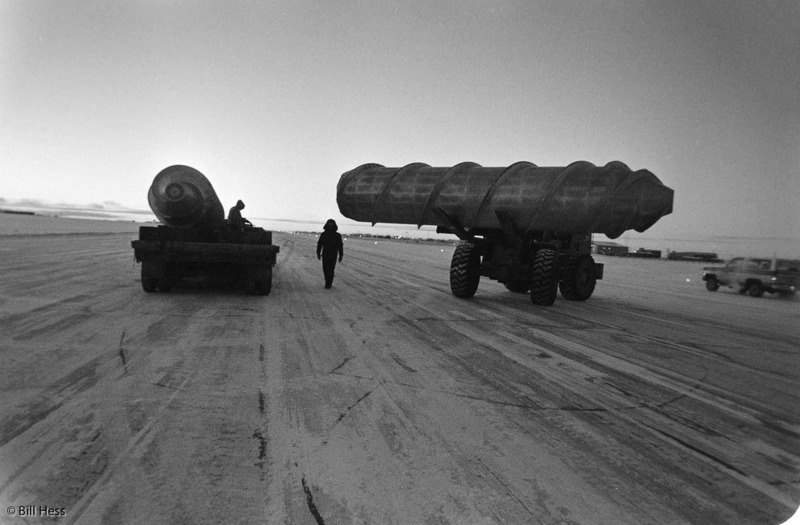
It was here, on the runway of the Will Rogers-Wiley Post Memorial Airport, that the immensity of the spectacle finally overwhelmed me. I felt as though I had been hurled into the Twilight Zone and was never getting out. None of this could be real. A simple, natural event, turned into the worlds biggest sideshow, with no sign of ending. One technological wonder after another followed each other into action, the effort always growing, escalating, bubbling and boiling way beyond the control of anyone involved. We were all helpless, trapped to ride along and struggle along, whether we were whale hunters, big oil, borough, military, Greenpeace, or media, there was no stopping, no backing out - we just had to keep plunging forward.
Whatever it took, regardless of expense, logic or what was best for human or whale, this had to be seen through until the whales had either died or left the immediate area, at which time the odds were good that they might die somewhere else before they could leave the Arctic - they had to be given the chance.
Just as I was frustrated yesterday when I could not find the pictures of Whitlam on the ice pointing the way to the helicopter, I am equally frustrated now, because I took a tour of the plane and I photographed the crew members as they beamed with pride while the rest of us stumbled through their aviation wonder in awe. I cannot find those photos now.
At that moment, it suddenly seemed somehow like the rescue had very little to do with whales anymore. It was a bit of a race, though. A race to see if the best that the cleverest, brightest, and most expensive technology of our society could beat a handful of Eskimo hunters wielding chainsaws. Officially, no one was going to admit that, but it was true.
Yet, all these diverse groups were working together to save the whales. That is all true. People who had often battled each other were now working together, even as they competed, in common cause. The Soviets were coming. Very soon, we would be working with the very people with whom we had spent my entire lifetime mutually readying ourselves to destroy the entire human world. People were getting to know each other. It appeared to me that everyone involved honestly did want to see the whales rescued.
Still, it was a race, a contest. Jeff Berliner overheard a National Guardsman comment to another that if they didn't hurry up and get their act together, "the Eskimos are going to beat us to the rescue of the whales."
I had my favorites in this race - no doubt about it. The hunters. I wanted them to win. Yet, when Bill Allen (above at press conference) started talking about the capabilities of the screw tractor, how it could shoot right through the ice and rip an ice-free path 15 to 16 feet wide, clear of debris and slush - a good path for whales to follow - how it could do in a matter of a couple of hours what would still take the whale hunters days, I wanted it to work. I wanted it to clear the path to where the Soviets would rip open the ridge. I wanted the whales to swim through. I wanted the whales to go follow the path, into the open sea, where we could all photograph them as they waved their flukes goodbye. Then, all the media could leave, Barrow could slip back to being Barrow.
I could slip into bed, to sleep for a week or two. Then, when I awoke, I could go back to documenting the life of one of America's most unique communities - a whale hunting community - bowhead whales. If this ended soon, Nuiqsut's three unused strikes might yet be passed to Barrow. The fall hunt might resume.
That's what I wanted. But, it doesn't work that way in the Twilight Zone. The Twilight Zone is an extremely difficult place to get out of; some say impossible. Even now, on February 17, 2012, 23 years and five months later, it somehow seems that, in some ways, I have never completely got out of the Twilight Zone that I snowmachined into in 1988.
That's my friend, colleague, and housemate through the duration of the rescue, Jeff Berliner of UPI, asking Colonel Tom Carroll a relevant, pertinent and intelligent question regarding the participation of the National Guard and the C-5A.
Although to my eye, this part of the operation looked to be extremely expensive, a member of the C-5A crew told me this mission was not costing the guard anything extra beyond what would have been spent anyway. Had they not flown the jet to Barrow, they would have flown the jet somewhere else. The fuel burn would have been the same, he said, maintenance would have been the same, work hours the same.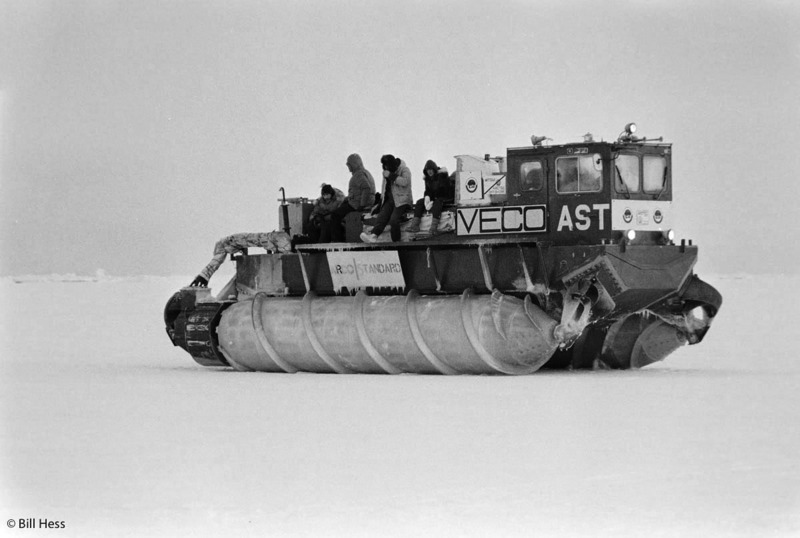
In the hope that he could erase all skepticism among the local population, before he put it into action, Bill Allen invited Acting Mayor Warren Matumeak, elder hunters Alred Leavitt, Whitlam Adams and some other community elders and leaders for a ride on the screw tractor.
Warren Matumeak walking away with an ABC reporter after the ride.
Alfred and Whitlam, after the ride.
Once again, I am sad and frustrated. Bill Allen did put the screw tractor into action, but I cannot find the pictures. He drove it into a crack, it broke through and then cut through the ice as slick and swiftly as he had promised - but it did not leave a clear path. The path filled with slush and ice. It was not a path the whales could swim through. It was a path that was of no value to whale nor man.
So, back at Prudhoe, welders began to design and assemble a scoop the tractor could pull behind it to clear the slush and ice out of the path. If this failed, and if the Soviets failed, then somewhere, I can't even remember where, people began to sew together a large net that could be flown to Barrow and then used to net the whales and hoist them out of the water and fly them to safety.
I don't think anyone had any idea how this might be accomplished, but, if need be, the net would be there. People could then try to solve the problem.
The screw tractor, at night. If I recall correctly, a repair was being made, a weld applied. The tractor would get another chance - as Oran Caudle knows so well. I believe I have those negatives - so readers will still get to see it in action.
Meanwhile, the whalers kept cutting their holes, drawing ever closer to the pressure ridges.
p>
Complete series index:
Part 2: Roy finds the whales; Malik
Part 5: To rescue or euthanize
Part 6: Governor Cowper, ice punch, chainsaw holes
Part 7: Malik provides caribou for dinner
Part 8: CNN learns home is sacred place
Part 9: World's largest jet; Screw Tractor
Part 11: Portrait: Billy Adams and Malik
Part 12: Onboard Soviet icebreakers


